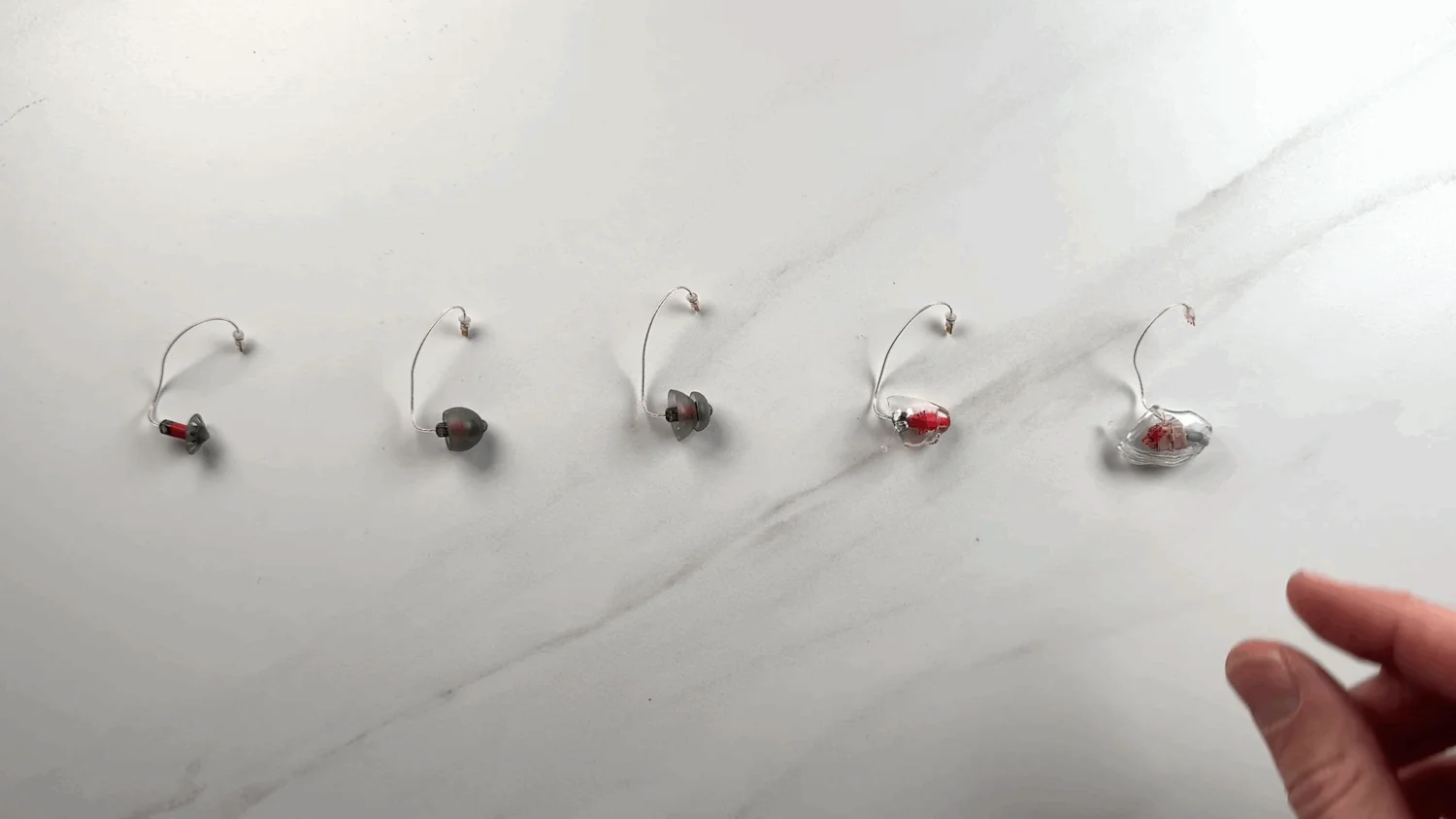At Harley Street Hearing, our mission is to ensure that every patient receives the most precise and effective hearing aid fitting possible. One of the most important tools in achieving this is the use of Real Ear Measurements (REMs).
What are Real Ear Measurements (REMs)?
Real Ear Measurements are an objective method of verifying how a hearing aid performs while in the ear. During the process, a small probe microphone is positioned just millimetres from the eardrum, capturing the sound produced by the hearing aid. This measurement is compared to a target amplification curve based on the patient’s audiogram, allowing audiologists to adjust the device precisely.
Unlike generic “first fit” programming that relies on average values, REMs account for the unique anatomy of each persons’ ear canal. No two ears are identical, and REMs ensure the amplification delivered matches both the patient’s hearing profile and individual ear structure.
Why REMs are essential for a better hearing experience
REMs are essential for optimising both hearing clarity and comfort. They ensure that amplification is accurate across soft, conversational, and loud sound levels, providing a balanced hearing experience.
This is particularly important for improving speech understanding, especially in environments with background noise.
For patients with high-frequency hearing loss, which is common in age-related hearing impairment (presbycusis), REMs allow audiologists to fine-tune the amplification of consonants such as “s,” “th,” and “sh,” which are critical for speech clarity.
Without REMs, hearing aids may leave speech muffled or, conversely, over-amplified, causing discomfort and listening fatigue.
5 reasons why REMs are necessary
- Your ears are unique: Every ear canal is shaped differently. Using REMs ensures that your hearing aids are personalised to your anatomy, not just a generic template. This guarantees the sound hitting your eardrum matches your hearing prescription.
- Improved speech clarity: Most people with hearing loss struggle with high-frequency sounds – think “th”, “s”, “sh”, “p”, “t”. REMs optimise these frequencies, improving speech clarity and helping you understand conversations better. Without them, hearing aids may leave speech sounding muffled or even amplify sounds incorrectly.
- Comfort at all volumes: REMs allow your audiologist to measure how your aids respond at soft (50dB), conversational (65dB), and loud (80dB) sounds. This ensures soft sounds are audible, normal speech is natural, and loud sounds aren’t uncomfortable, reducing listening fatigue.
- Less trial and error: Accurate initial fitting means fewer follow-up appointments. Rather than guessing what adjustments are needed, REMs give your audiologist a clear, measurable starting point.
- Better hearing in background noise: If your aids aren’t optimised in a quiet setting, they won’t perform well in noisy environments. REMs improve clarity and comfort in real-world listening situations.
Clinical standards and evidence supporting Real Ear Measurements
The importance of REMs is increasingly recognised in clinical guidelines. For example, the National Board of Health in Denmark now mandates REMs as part of legal standards for hearing aid fittings. Studies and patient data indicate that hearing aids fitted without REMs may perform sub optimally in up to 50-70% of cases, underscoring the necessity of this measurement for accurate hearing aid performance.
At Harley Street Hearing, REMs are incorporated into every hearing aid fitting as standard practice. By measuring and adjusting amplification in real-time, we minimise the need for repeated follow-up appointments and optimise patient satisfaction from the offset.
Why aren’t REMs always performed?
Despite the benefits, some audiologists skip REMs. Here are some of the most common reasons:
- It takes too long: Some clinics prioritise speed over accuracy. Don’t settle for a rushed fitting when your hearing aids cost thousands.
- Equipment is expensive: The cost should be the clinic’s responsibility, not yours. Invest in a provider who values quality.
- Lack of training: REMs require practice. Some audiologists may not have had sufficient hands-on experience.
- “You don’t need it”: This is simply not true. You won’t know if your hearing aids are optimal without it.
- Clinic habits: Some clinics have historically not performed REMs. Again, that’s not your problem; you deserve the best service.
How to choose the right audiologist
Patients should prioritise hearing care providers who perform REMs as part of their fitting protocol. Clinics that skip this process may prioritise speed or cost over accuracy, and this can be at the detriment to your hearing aid efficiency and experience.
At Harley Street Hearing, we ensure that every hearing aid is individually verified and adjusted for each patient, reflecting our commitment to excellence in hearing care.
Even if you have already received hearing aids without REMs, it is possible to request a verification session at any time. Ensuring accurate amplification can significantly improve speech understanding, comfort, and overall hearing aid satisfaction.
Our final thoughts on Real Ear Measurements
Real Ear Measurements are not an optional extra; they are the standard for high-quality hearing aid fitting.
At Harley Street Hearing, we incorporate REMs in every fitting to provide measurable, personalised results that give each hearing aid wearer the exact support they need. Accurate verification ensures that patients experience maximum benefit from their hearing aids, with improved speech clarity, comfort, and performance in both quiet and noisy environments.
For those seeking professional hearing care in the UK, choosing Harley Street Hearing can make a substantial difference in the effectiveness of your hearing aids. Book your hearing aid consultation with our expert audiologists.
Watch what Matthew Allsop has to say on the Hearing Tracker YouTube channel
Enjoy this article? You might be interested in some of our others:




